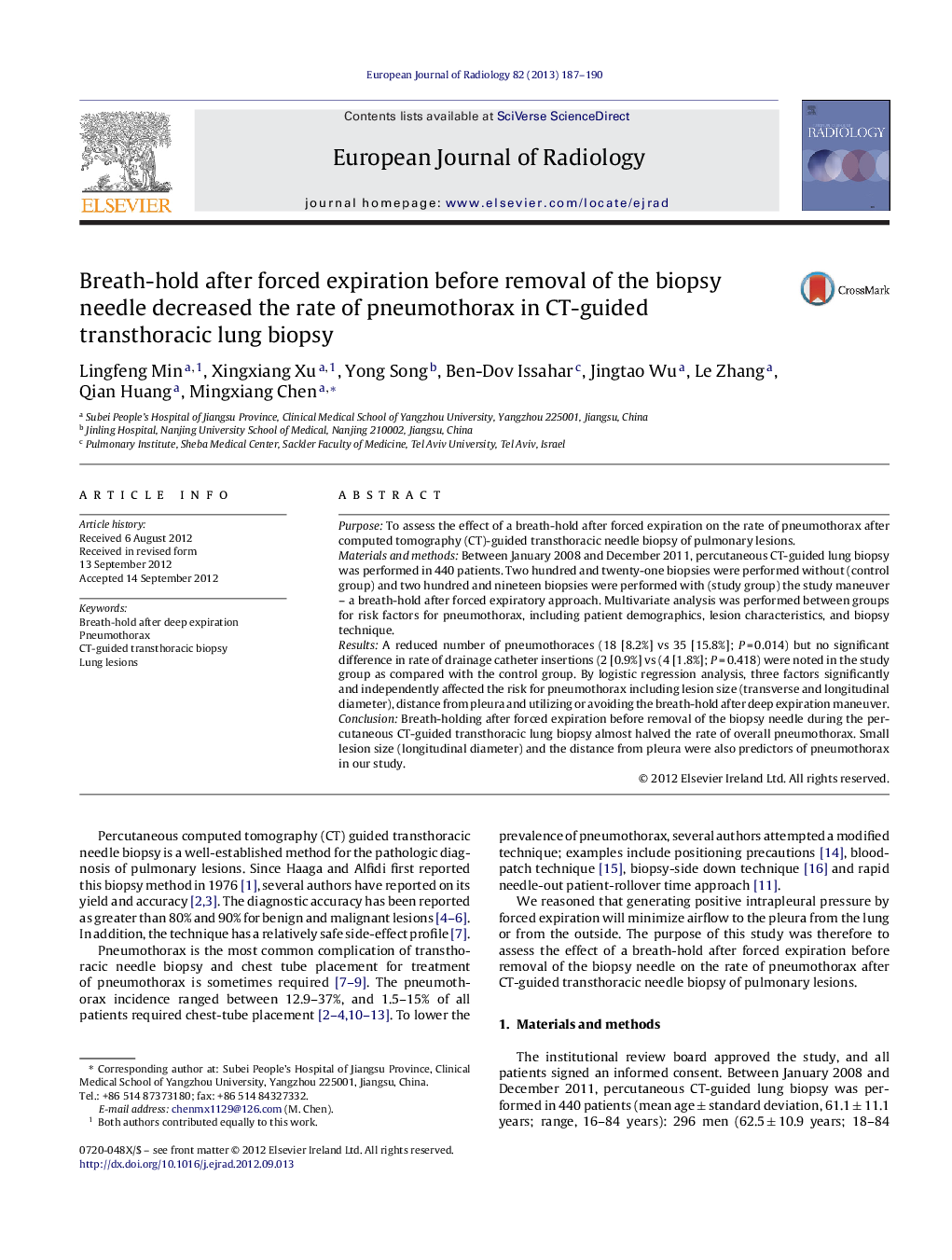| Article ID | Journal | Published Year | Pages | File Type |
|---|---|---|---|---|
| 4226067 | European Journal of Radiology | 2013 | 4 Pages |
PurposeTo assess the effect of a breath-hold after forced expiration on the rate of pneumothorax after computed tomography (CT)-guided transthoracic needle biopsy of pulmonary lesions.Materials and methodsBetween January 2008 and December 2011, percutaneous CT-guided lung biopsy was performed in 440 patients. Two hundred and twenty-one biopsies were performed without (control group) and two hundred and nineteen biopsies were performed with (study group) the study maneuver – a breath-hold after forced expiratory approach. Multivariate analysis was performed between groups for risk factors for pneumothorax, including patient demographics, lesion characteristics, and biopsy technique.ResultsA reduced number of pneumothoraces (18 [8.2%] vs 35 [15.8%]; P = 0.014) but no significant difference in rate of drainage catheter insertions (2 [0.9%] vs (4 [1.8%]; P = 0.418) were noted in the study group as compared with the control group. By logistic regression analysis, three factors significantly and independently affected the risk for pneumothorax including lesion size (transverse and longitudinal diameter), distance from pleura and utilizing or avoiding the breath-hold after deep expiration maneuver.ConclusionBreath-holding after forced expiration before removal of the biopsy needle during the percutaneous CT-guided transthoracic lung biopsy almost halved the rate of overall pneumothorax. Small lesion size (longitudinal diameter) and the distance from pleura were also predictors of pneumothorax in our study.
